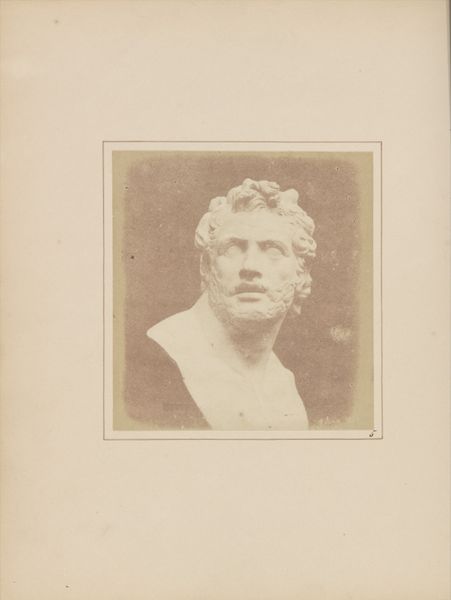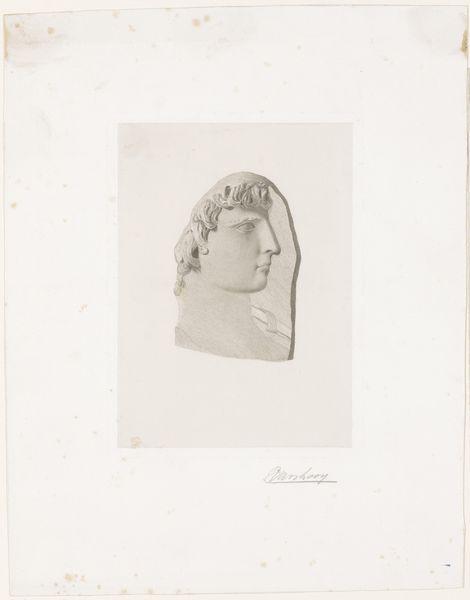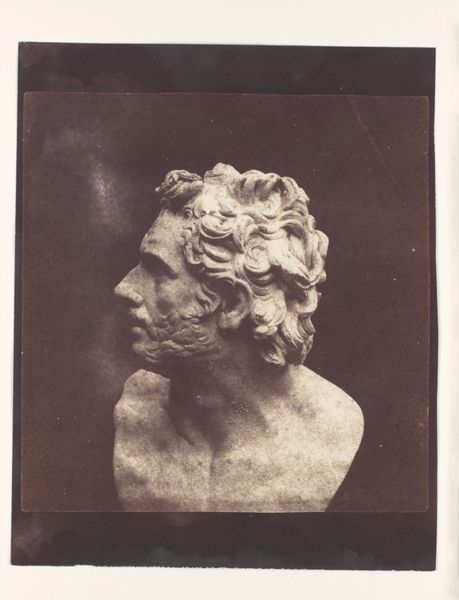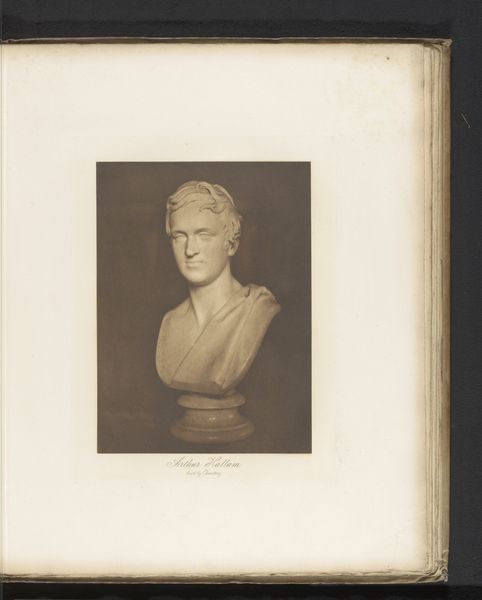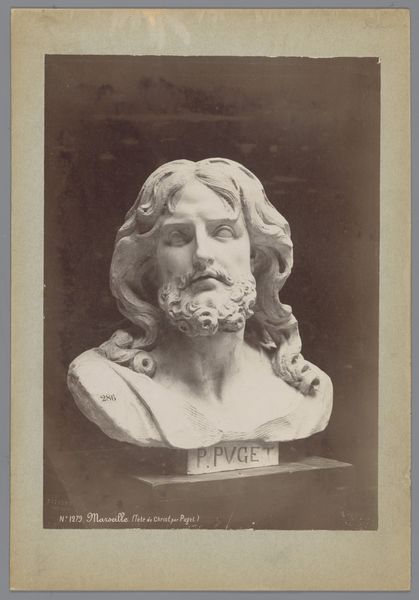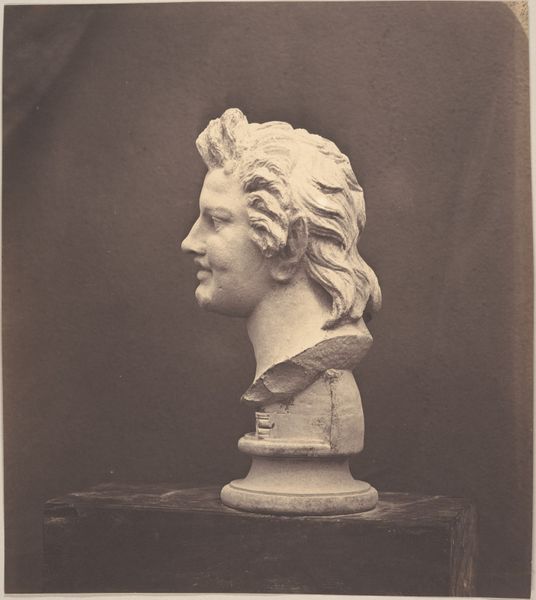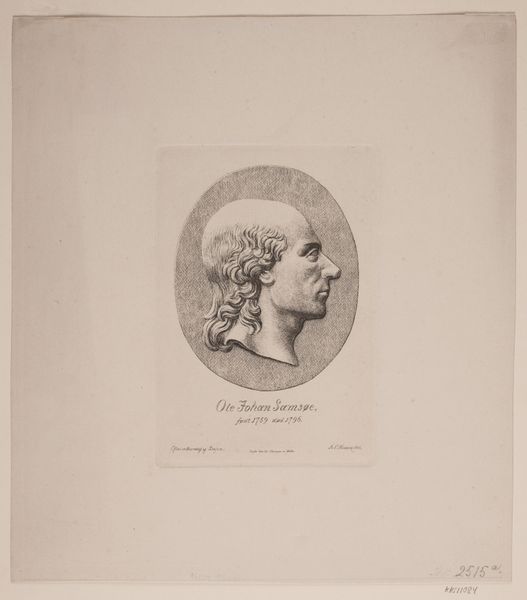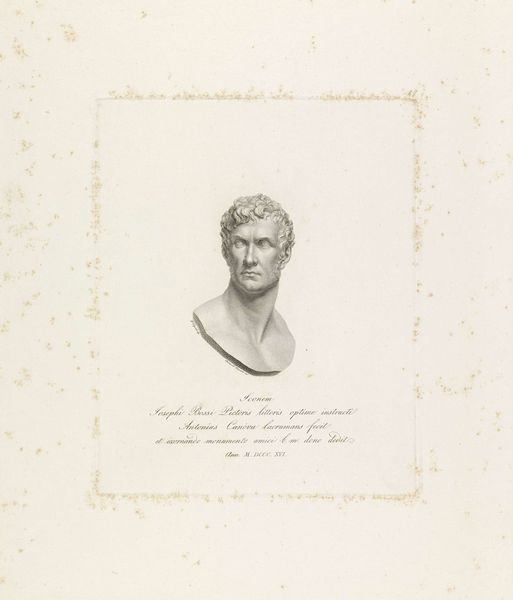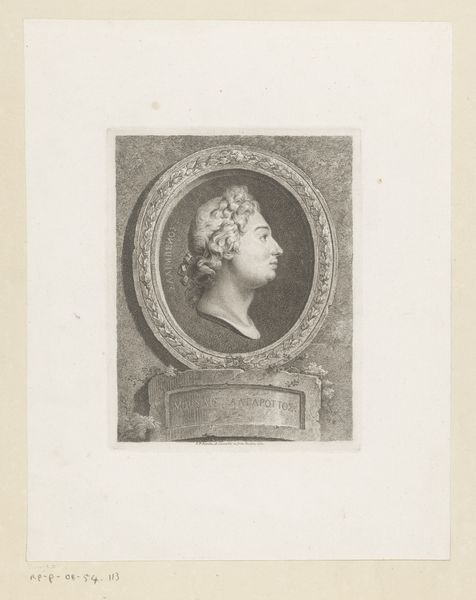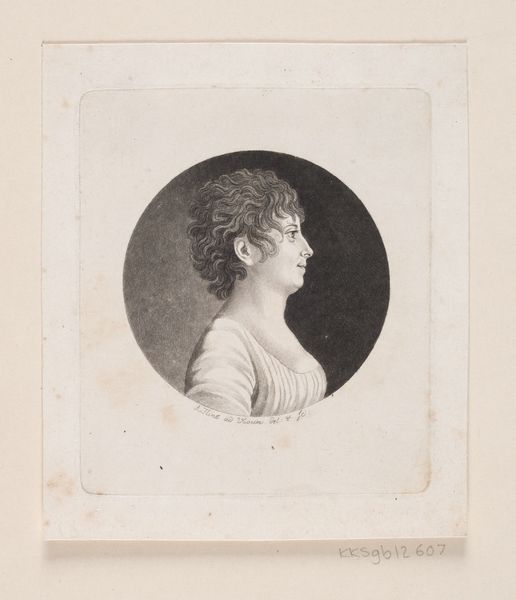
daguerreotype, photography, sculpture
#
portrait
#
daguerreotype
#
classical-realism
#
photography
#
sculpture
#
romanticism
Copyright: Public Domain
Editor: We are looking at William Henry Fox Talbot's "Bust of Patroclus," made between 1843 and 1845. It's a photograph, specifically a daguerreotype, of what seems to be a classical sculpture. I am struck by the contrast between the stark white bust and the blurry sepia background, making the sculpture appear detached from time and space. How would you interpret this work? Curator: I would first point to the technical skill evident in rendering the texture of the marble and the gradations of light and shadow. Notice the way Talbot captures the sculptural form not through mimetic representation alone, but through a play of light and dark, which adds a layer of abstraction to the classical form. How do the imperfections of the daguerreotype, the slight blurriness, impact the overall composition in your view? Editor: I see how those imperfections, the blurs and imperfections, add a layer of romanticism to an otherwise classical subject, making it feel more personal and less academic. Does the classical subject matter intersect in some ways with the advent of this new medium? Curator: Precisely. The choice of subject aligns with the Neoclassical revival popular at the time, yet the photographic medium disrupts the smooth, idealized forms associated with classical sculpture. It introduces indexicality – this is not just a representation of Patroclus, but an actual trace of its presence. Notice also how Talbot uses framing and composition to control the reading of the artwork and direct our gaze through an aperture that signifies technological prowess, but does not overcome the aesthetic conventions of depicting sculpture. Editor: That makes me consider Talbot's decisions more intently; each one layers a more modern perspective on the classical subject matter. Thank you! Curator: My pleasure; and it is a delight to observe your critical awareness of formalist interpretation within this photograph's matrix of cultural referents.
Comments
No comments
Be the first to comment and join the conversation on the ultimate creative platform.

